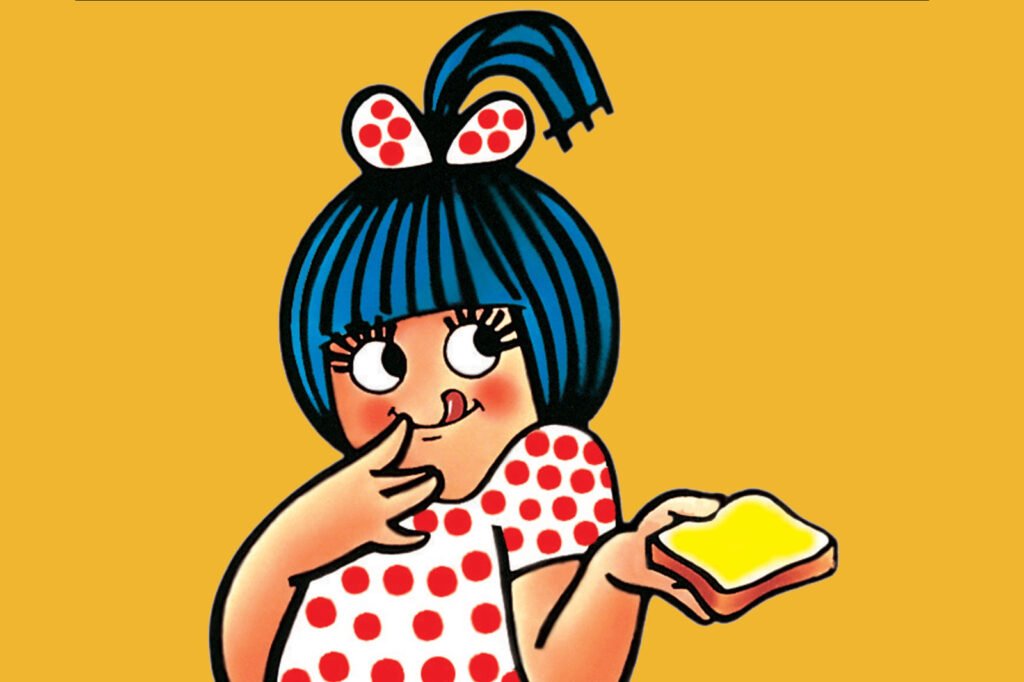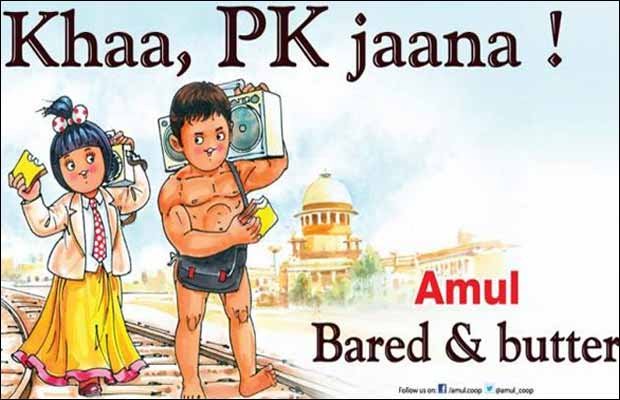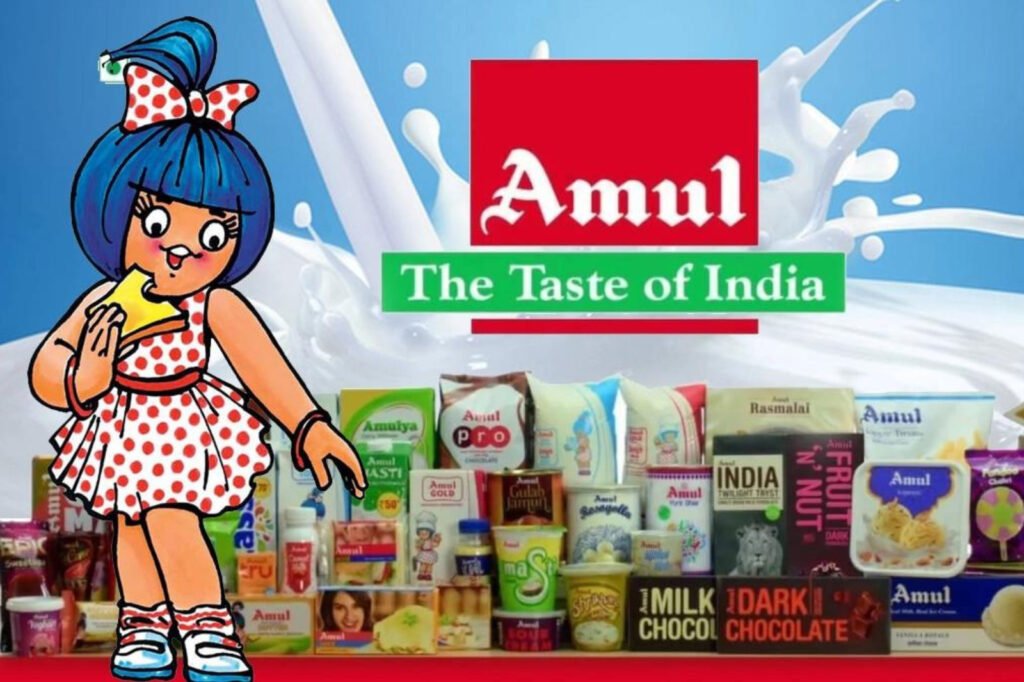The A in Advertising from the A of Amul Girl that Blasts Positivity, Optimism and Hope.

As a child, there used to be a tall banner around the streets, where I always thought, “What’s new, Amul, this time?”
But what inspires us the most is its significant, visually pleasing, hand-drawn yet digitally created: the Amul Girl.
We all have seen the Amul Girl—the chubby, blue-haired, and bubbly girl with a polka dot dress who is Highly political and opinionated at times but extremely hilarious. If there is a brand that uses the current social and political scenario to its best, then call it out loud. “Amul, it is.”
"
In this article, let’s talk about Amul’s advertising lessons that blast positivity and Optimism through its iconic Amul Girl.
Let's dive right in..
The History of Amul
Before we start our marketing lesson, let's take a brief look at the history of Amul,
Anand Milk Union Limited (Amul) is a cooperative founded in Anand, Gujrat, India, in 1946. It started as a movement against exploiting marginal milk producers by small-town merchants and agents selling Polson butter.
The unfair trade practices angered the public, so Kaila farmers and their leader, Tribhuvandas K. Patel, approached Sardar Vallabhbhai Patel, who advised them to form a cooperative.
Since then, Amul has been the prominent Coperactive Company and a beacon of hope and encouragement for dairy farmers in Gujarat. Amul is managed by Gujarat Cooperative Milk Marketing Federation Ltd. (GCMMF), a cooperative comprising 3.6 million Gujarat dairy farmers.
On 1946 December 19, eight months and 27 days before India received Independence from the British, they formed the Kaira District Co-Usable Milk Producers’ Union by Tribhuvandas Patel with the support of Sardar Vallabhbhai Patel, a famous freedom fighter.
In June 1948, the Union began pasteurizing milk for the Bombay Milk Scheme.
In 1955, on October 31, Amul inaugurated and built its first plant, a huge change that brought a revolution in the milk industry, where they used Buffalo milk on a large scale. The Union named its products under the brand name AMUL for marketing purposes.
In 1965, the National Dairy Development Board got established in Anand, Gujarat.
In 1970, the white revolution in India began, and the government started using Amul as a great example. The government began to support such companies on a large scale to boost the white revolution.
But Why Is Amul Such A Model Brand?
It is a marvel how,
Harnessing the power of millions of dairy farmers and with the help of cooperatives like Amul, India has become the world’s largest milk producer. Some facts about the Indian dairy industry:
It accounts for 22% of the world’s milk production, supports 100 million households, and contributes 4.5% to the country’s GDP.
Therefore, understanding the advertising strategy of Amul, India’s largest dairy cooperative, is crucial.
The Advertising Lessons From Amul
You must first understand how it got built to this point
You can attribute the popularity of Anime in India to several cultural factors.
1. Create a Special Brand Mascot
Time for lesson number one from Amul,
Its advertising is the key to its marketing. When you say Amul, you first remember the Amul Girl standing with the bread in her hand and butter covered on the slice with the tag “Utterly Butterly Delicious.”
The brand created The Amul Girl in response to Polson’s Butter Girl. Sylvester DaCunha designed the Amul Girl as a lovely little girl who could make Indian hearts flutter.
They created AMUL Girl long ago when most people wanted to trust something other than a new brand. Hence, the illustrator Eustace Fernandez thought of a way to find their way through the hearts of Indian women, especially homemakers.
Advertising on television was expensive back in the 1960s, so they used billboards as a cheaper alternative, and that’s when the idea of Amul Girl worked out. DaCunha Communications, which handled the advertising side for them, had used them, and Nisha DaCunha coined the famous slogan, “Utterly Butterly Delicious.”
Though initially, it had a specific criticism because butterly was not a grammatically correct word.
However, Amul Girl made her first appearance in 1966 as a cute little girl.


2. Do Not Shy Away From Controversial
It's all about your voice,
Amul’s history of being opinionated has been since its inception. It was built precisely due to Polston exploiting the farmers. The very beginning of Amul was under the guidance of Sardar Vallabhbhai Patel.
So, Amul did not shy away from making their opinions popular. That was precisely how Amul primarily found its advertising fame.
Whether it is about China trying to invade the Indian border or Donald Trump, Amul has been there.
This isn’t a new phenomenon because, since the arrival of the Amul girl, the brand associates itself with controversial ideas but in a humorous way.
It had associated itself with the Hare Krishna movement that had picked up back then with the slogan ‘Hurry Amul, Hurry Butter, Hurry Hurry.’ At the same time, the Amul girl danced away with a Hare Krishna devotee.
Or the next where it made its voice known in protest against the frequent hartals in Kolkata in 1960s.


3. Make The Ad Humourous and Encouraging
No fun, no attention, this should be a mantra,
The idea of an ad is such that it creates a humorous environment. At the same time, it should also focus on encouragement.
Amul has a very well-known advertising strategy for marketing its products while promoting various people.
Like the ads, Amul consistently supports sportspersons and various other people. It is an excellent way of promoting the brand while showing that the brand values it.
The brand also becomes well known for its stand by using these practices.


4. Your Brand Should Display Your Conscience
Remember that when you've heard, you are responsible,
When people pick on you and make fun of you for your views and ideas, Amul keeps up the idea of voicing opinions. It is one of the first brands that show a specific conscience.
Like its voice against Article 377, which makes homosexuality illegal to celebrate International Women’s Day. Amul’s advertisements encourage people to take Covid Vaccines during the Covid days.
The Amul brand has always shown its siding with nationalist ideas, whether it was taking a protest against banning cultural festivals like Jallikattu or its protest against frequent bandhs.
Amul is also known for siding with the idea of uniting people with its Ads. It pulled out a billboard when the Mandal Commission published its report to the supreme court.
On November 16, 1992, the Supreme Court upheld the Mandal Commission’s 27 pc quota for backward classes and the principle that the combined scheduled-caste, scheduled-tribe, and backward-class beneficiaries should not exceed 50 pc of India’s population.
Amul portrayed precisely how the familiar Indian people reacted to the news and replayed those feelings within Amul Girl.
Rahul da Cunha, head of Dacunha Communications, who took over the Amr Butter account from his father Sylvester in the early 1990s, said: “We try to reflect what people think without judging. The Amur girl is the nation’s conscience.”
But the world and media landscape has changed since the first Amul Girl Ad campaign. Today, Amul creates a new “topic” every two days to keep up with his rapidly changing news cycle, posting on billboards, newspapers, and social media.
But new digital audiences and rapid creative change have created roadblocks for legacy brands, such as Twitter, which suspended the brands’ accounts in June 2020 for publishing controversial ads. Amul attitudes have become an integral part of how Indians consume news.
Final Thoughts
In short:
Amul and its ad campaigns are not just an advertisement for their products. But it is also an idea that creativity can always make an impact, and when you have an audience that loves to hear you, make that voice heard loud and clear. Make a difference with your ad campaign.
Subscribe to new post
The One Liner
Useful Links
Order Related Queries
Useful Links
Order Related Queries





